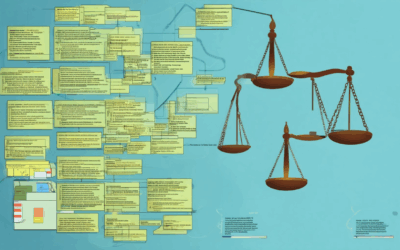Volunteering is a cornerstone of successful organizational growth, but crafting effective volunteer job descriptions is often overlooked. While many organizations recognize the importance of attracting the right volunteers, few understand how to create job descriptions that truly resonate. From clarifying expectations to inspiring action, the right volunteer job description can transform your recruitment efforts. Whether you’re managing a small nonprofit, a large corporation, or a community-based initiative, this guide offers practical tips, real-world examples, and actionable strategies to create volunteer job descriptions that not only attract the best talent but also foster meaningful connections. By addressing key questions, exploring best practices, and providing sample descriptions for various roles, this article equips you with everything needed to design compelling volunteer job postings that drive success. Ready to unlock the potential of your volunteer team? Let’s dive in and discover how to create volunteer job descriptions that inspire action and achieve your goals.
Key Takeaways: Crafting Effective Volunteer Job Descriptions
- Clear and Specific Titles: Begin with a precise title that reflects the role’s nature, such as “Volunteer Event Organizer,” to attract suitable candidates and align with search engine optimization (SEO) strategies.
- Duration of Participation: Clearly state the time commitment, whether it’s a one-time event or ongoing, to help applicants gauge their availability and interest.
- Role and Responsibilities: Outline specific duties, using action verbs and clear categories to set expectations and avoid confusion. Mention tasks like event setup, participant support, and administrative tasks.
- Contributions and Achievements: Highlight accomplishments with quantifiable results, such as “managed event logistics leading to a 95% satisfaction rate,” to showcase impact and attract motivated volunteers.
- Alignment with Organization’s Goals: Explain how the role contributes to the organization’s mission, using specific objectives from the mission statement to enhance relevance.
- Skills and Knowledge Gained: List relevant skills and knowledge, categorized for clarity, to add value to the volunteer’s resume and attract candidates with specific expertise.
- Customization: Tailor descriptions to meet unique role requirements while maintaining consistency across postings, possibly using customizable templates.
- Characteristics of Volunteer Work: Include traits like uncompensated service and community orientation to help volunteers assess their fit for the role.
- Types of Volunteer Roles: Categorize roles, such as mentoring or hands-on labor, to provide a comprehensive overview while aiding navigation.
- Benefits of Volunteering: Emphasize skill development, personal fulfillment, and networking to attract volunteers with both intrinsic and extrinsic motivations.
- Getting Started: Offer clear, manageable steps for volunteering, such as researching organizations or contacting local groups, to encourage participation.
- Language and Structure: Use positive language and clear headings to balance information density with readability, catering to both experienced and newcomer audiences.
- Organization and Adaptability: Highlight the need for teamwork and adaptability to prepare volunteers for flexible environments and emphasize effective volunteer management.
By integrating these elements, job descriptions will effectively attract the right volunteers, enhance SEO performance, and foster a motivated workforce aligned with organizational goals.

How to Write a Volunteer Role Description
A well-crafted volunteer role description is essential for attracting motivated individuals who align with your organization’s mission. Below is a step-by-step guide to creating an effective volunteer role description:
1. Define the Role Title
Start by clearly stating the volunteer role title. Include the specific responsibilities and expectations associated with the position. Example: “Volunteer Marketing Coordinator.”
2. Outline Position Details
Include key details such as:
- Location (e.g., remote or onsite)
- Time commitment (e.g., weekly hours or project-based)
- Durations (if applicable)
- Start date
3. Provide Organization Background
Briefly introduce your nonprofit organization or cause. Highlight your mission and values to inspire potential volunteers. Example: “At XYZ Foundation, we empower underserved communities through education and support programs.”
4. Describe the Role Overview
Explain the purpose of the volunteer role and its importance to the organization. Mention the impact volunteers will make and how their contributions will help achieve goals. Example: “As a volunteer, you will assist in developing and executing marketing campaigns to increase community awareness of our initiatives.”
5. List Key Responsibilities
Outline specific tasks and duties volunteers will undertake. Use clear and actionable language. Example responsibilities:
- Assist in creating promotional materials
- Research and identify new partnerships
- Support event planning and execution
- Help with donor engagement efforts
6. Specify Qualifications and Requirements
Clearly state the skills, experience, and qualifications required for the role. This ensures you attract candidates with the right fit. Example qualifications:
- Strong communication and interpersonal skills
- Experience with social media management
- Proficiency in Microsoft Office Suite
- Available to commit X hours per week
7. Explain How to Apply
Provide a clear process for interested individuals to apply. Include:
- Contact information for submissions
- Application deadline
- Instructions for submitting applications
To maximize engagement, consider highlighting opportunities for growth, teamwork, and the chance to make a meaningful impact. Always ensure the tone reflects your organization’s values and encourages passionate individuals to join your team.
NPO Expert provides comprehensive resources for nonprofits, including volunteer management strategies and role description templates. Explore our guides and tools to streamline your recruitment process and find the perfect volunteers for your cause. Visit NPO Expert today!
Job Description for a Volunteer Position
A volunteer job description serves as a crucial document for outlining the expectations, responsibilities, and qualifications required for individuals interested in contributing to an organization’s mission. Below is a detailed breakdown of key components typically included in a volunteer job description:
Role Overview
- Purpose : Clearly define the purpose of the volunteer role, emphasizing its alignment with the organization’s goals and values.
- Duration : Specify whether the role is short-term, long-term, or ongoing, along with expected commitment levels.
Responsibilities
Volunteer roles often involve a variety of tasks, depending on the organization’s needs. Common responsibilities may include:- Supporting Staff : Assisting with administrative duties, project coordination, or event planning.- Mission-Aligned Tasks : Engaging in activities that directly contribute to the organization’s objectives, such as outreach, program implementation, or advocacy efforts.- Professional Attitude : Demonstrating reliability, punctuality, and a positive demeanor.- Compliance : Adhering to organizational policies and ethical standards.- Continuous Improvement : Helping to enhance operational efficiency and program outcomes.
Qualifications
Candidates for volunteer positions are typically expected to meet certain criteria, such as:- Passion for the Cause : A strong alignment with the organization’s mission and values.- Available Time : Consistency in availability to fulfill commitments.- Interpersonal Skills : Ability to collaborate effectively with team members and stakeholders.- Adaptability : Flexibility to handle varying responsibilities and challenges.
Expectations
Clarifying expectations helps ensure a smooth volunteer experience. Key expectations may include:- Communication : Regular updates with the supervisor and timely responses to queries.- Commitment : Reliability in attending scheduled meetings or events.- Feedback : Openness to constructive criticism and willingness to learn.- Confidentiality : Maintaining confidentiality regarding sensitive information.
Examples of Volunteer Roles
- Event Planning Volunteers : Assist in organizing and executing events, such as fundraisers or community outreach programs.
- Administrative Volunteers : Support office operations, including data entry, filing, and correspondence.
- Mentorship Volunteers : Provide guidance and support to new volunteers or team members.
- Creative Volunteers : Contribute skills in design, marketing, or other creative fields to enhance the organization’s visual identity.
By crafting a comprehensive and clear volunteer job description, organizations can attract motivated individuals who are invested in the organization’s success and aligned with its core values. This approach not only facilitates effective volunteer management but also strengthens the organization’s capacity to achieve its mission-driven goals.

What Are Volunteer Position Descriptions Developed For?
Volunteer position descriptions are crafted to serve several critical purposes, each contributing to the effective management and engagement of volunteers within an organization. Here’s a breakdown of their primary objectives:
- Building a Volunteer Database: These descriptions act as a foundational tool for organizations to systematically identify, assess, and manage potential volunteers. By outlining specific roles and responsibilities, they enable organizations to build a robust database of qualified individuals.
- Documenting Requirements: Clear and detailed descriptions ensure that volunteer roles are well-defined, reducing confusion and miscommunication. This helps in attracting candidates whose skills and interests align with the tasks at hand.
- Providing Recruitment Content: Engaging and well-crafted descriptions serve as a powerful recruitment tool. They help organizations attract motivated individuals who are interested in contributing their skills and time effectively.
- Limiting Unskilled Volunteers: By specifying necessary qualifications and experience levels, organizations can minimize the likelihood of unskilled volunteers being placed in roles they’re not prepared for, ensuring smoother operations and better outcomes.
These documents are also instrumental in ensuring that volunteer programs are aligned with the organization’s goals, fostering a productive environment where volunteers feel valued and empowered. By tailoring descriptions to specific roles and utilizing clear, concise language, organizations can enhance the appeal of volunteer opportunities and maximize the impact of their efforts.
For further reading on optimizing volunteer engagement, explore resources from platforms like VolunteerMatch and Idealist , which offer valuable insights and tools for managing volunteer programs effectively.

How to Describe Volunteer Work
- Start with a clear and concise title that reflects the nature of your involvement.
- Include the duration of your participation to give context to your experience.
- Detail your specific role and responsibilities within the volunteer program.
- Highlight your major contributions and achievements to demonstrate impact.
- Explain how your volunteer work aligns with the goals of the organization or cause.
- Add any relevant skills or knowledge you gained through your volunteer efforts.
- Be prepared to tailor your description to match the specific requirements of the job or application.
Job Description of a Volunteer Event
The role of a volunteer event organizer involves a combination of administrative duties, participant support, and logistical coordination. Here’s a breakdown of the key responsibilities and expectations:
- Event Setup and Coordination: Volunteers are responsible for setting up the event space, including arranging equipment, signage, and necessary materials. This may involve assisting with the layout and ensuring everything is organized and ready for the event day.
- Participant Support: A key aspect of this role is helping participants navigate the event. This can include guiding individuals through registration processes, answering questions, and providing directions or assistance as needed.
- Marshaling and Cheering: Depending on the event type, volunteers may be tasked with marshaling participants, cheering them on, or handing out water bottles and snacks along the course.
- Administrative Tasks: Volunteers may also assist with administrative functions such as managing the start/finish area, collecting entry fees, distributing awards, and ensuring accurate record-keeping of participant data.
- Event Day Roles: On the day of the event, volunteers play a crucial role in ensuring everything runs smoothly. This includes welcoming participants at the start line, monitoring the event progress, and helping to clean up afterward.
Volunteer event roles often require strong communication skills, attention to detail, and the ability to work collaboratively. Flexibility and adaptability are also important, as unexpected challenges may arise during the event execution.
To maximize your impact as a volunteer, it’s essential to stay organized, follow instructions, and maintain a positive attitude. By contributing your efforts, you’ll help make the event successful and leave a lasting impression on participants and organizers alike.

How to Define Volunteer Work
Volunteer work refers to the act of dedicating time and effort to support a cause, organization, or community without expecting compensation. It is a form of selflessness where individuals contribute their skills, knowledge, and resources to benefit others or society at large. This type of work can take many forms, from informal acts of kindness to structured roles within nonprofit organizations.
Key Characteristics of Volunteer Work
- Uncompensated Service : Unlike paid employment, volunteer work is typically unpaid.
- Willingness to Contribute : Volunteers often choose their causes based on personal values or interests.
- Diverse Roles : From mentoring children to organizing charity events, volunteer roles vary widely depending on the organization’s needs.
- Community-Oriented : The primary goal of volunteer work is to make a positive impact on the community or those in need.
Types of Volunteer Work
- Mentoring and Tutoring : Providing guidance and support to individuals seeking education or career advancement.
- Event Planning and Execution : Organizing fundraisers, community events, or awareness campaigns.
- Administrative Support : Assisting with office tasks, data entry, or project coordination for nonprofits.
- Hands-On Labor : Participating in community cleanups, building projects, or disaster relief efforts.
Benefits of Volunteer Work
- Skill Development : Gain new abilities, strengthen resumes, and network with professionals.
- Personal Fulfillment : Experience the joy of helping others and contributing to meaningful causes.
- Networking Opportunities : Connect with like-minded individuals and professionals in your field.
Getting Started with Volunteer Work
- Identify Your Interests : Choose a cause or issue that aligns with your passions.
- Research Organizations : Look for reputable nonprofits or community groups in your area.
- Sign Up Online : Many organizations have websites where you can express your interest and submit applications.
- Reach Out Locally : Contact local schools, churches, or community centers to inquire about volunteer opportunities.
By participating in volunteer work, you can make a tangible difference while enriching your own life and community. Whether through small acts of kindness or larger commitments, every contribution counts toward a better world.





0 Comments